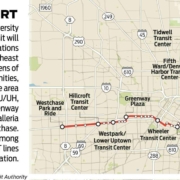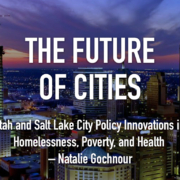Urban Doom Loop Coming for Cities with Commercial Real Estate Crash
From “The Next Crisis Will Start With Empty Office Buildings” in The Atlantic (no-paywall link), which discusses the rapidly declining value of office buildings in a remote work world, with follow-on property tax revenue declines for cities:
“Many cities face a difficult choice. If they cut certain services, they could become less attractive and trigger a possible “urban doom loop” that pushes even more people away, hurts revenue, and perpetuates a cycle of decline. If they raise taxes, they could alienate wealthy residents, who are now more mobile than ever. Residents making $200,000 or more contributed 71 percent of New York State’s income taxes in 2019. Losing wealthy residents to low-tax states such as Florida and Texas is already taking a toll on New York and California. The income-tax base of both states has shrunk by tens of billions since the pandemic began.”
“As more leases and loans come due, the bulk of the pain is still ahead of us. Over the next two years, many downtowns will find that dozens of buildings are no longer fit for purpose. Municipal services will likely deteriorate, and more people might leave. The worst-case scenario is a return to the 1970s, with bankrupt municipal governments, rising crime, and the flight of (primarily white) upper-middle-class residents. Landlords like to point out that “New York always comes back.” But some cities—like Detroit or Pittsburgh—never recovered from the previous waves of technological change. And even in New York, a comeback may take decades.”
“In the ’90s, the internet helped cities come back. As the economy became more dependent on innovation and creativity, many of the largest and densest downtowns boomed. In 2007, the world’s preeminent urban economist, Ed Glaeser, called it a “central paradox of our time” that cities remain “remarkably vital despite ever easier movement of goods and knowledge across space.” Economists have been busy explaining this paradox up until the current crisis. As the theory goes, companies require the rapid exchange of ideas and specialized division of labor that large cities provide. In addition, companies want access to the largest possible talent pool, and top talent likes to live in large cities because of lifestyle considerations.
The consensus among economists was that as technology and media expanded, economic activity would consolidate within a select few superstar cities. But even before COVID, the theory started to crack as some of the top-performing cities saw population decreases, tech giants started distributing their offices across smaller cities, and the office market was propped up by WeWork’s irrational, venture-capital-funded expansion.
The pre-COVID consensus wasn’t wrong, but the leading thinkers did not consider the full implications of their own theories. Once the quality of online collaboration crossed a crucial threshold, the internet itself became the largest talent pool and the premier facilitator of human interaction. And once highly educated individuals could earn a nice living from anywhere, lifestyle preferences became more diverse. This does not mean that superstar cities are doomed, but it does mean that their previously captive audience now has more options.
Cities will have to survive and adapt. In a world of consumer choice, locations must think like consumer products. One way to win is to double down on what only the biggest cities can offer—walkable streets, car-free transportation, and cultural and intellectual diversity. But smaller cities can emphasize shorter commutes, ample parking, proximity to nature, better schools, and lower taxes.”
Honestly, I think that last part is why the suburbs of Houston are booming so much – they get some of the best of both worlds. Fortunately for us, I don’t think the City of Houston is quite as dependent on office building property taxes. Our office values weren’t as over-inflated either, our return-to-office rates are higher, and we continue to grow quickly (which should fill in some of that office space over time).
As far as New York and other “superstar cities”, Glaeser and Ratti have a big NYT essay – “26 Empire State Buildings Could Fit Into New York’s Empty Office Space. That’s a Sign.” (gift link bypasses paywall) – proposing the conversion of NYC to a “Playground City”. It also graphically shows how “Houston’s vacant office space could fill 29.7 JPMorgan Chase Towers.” Lots of interesting thoughts in it. I’m not sure how viable it is, but it sure is an interesting read… and the top comments are really insightful as well.
We could be at a major inflection point for cities in the next few years…
Read the rest of this piece at Houston Strategies.
Tory Gattis is a Founding Senior Fellow with the Urban Reform Institute and co-authored the original study with noted urbanist Joel Kotkin and others, creating a city philosophy around upward social mobility for all citizens as an alternative to the popular smart growth, new urbanism, and creative class movements. He is also an editor of the Houston Strategies blog.
Photo: Carlos Oliva via Pexels.





 Public Domain
Public Domain


